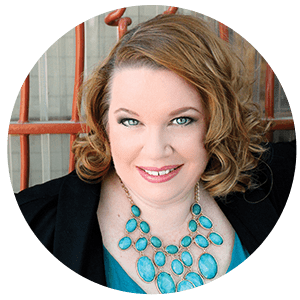After such a great response from my last post, What you need to Know before Hiring a Graphic Designer, I thought I'd share with you some things you should consider before hiring a web designer.
Here's just a few things to get your ducks in a row when starting a new website or redesigning your own already. Addressing these topics in advance will help you steer and focus your web design project, and also help you in the hiring process to ask important questions.
Keep in mind that websites and web designers come in all shapes and sizes. Your project will be unique to you and your business. This list applies to almost any website platform (WordPress, Joomla, or good ‘ole HTML).
What's the End Goal?
Knowing the purpose of your site is key. Your website can serve to act as your overall informational hub; however, it should have one clear purpose. That could be any of these:
- Sell a service or product
- Get clients to pick up the phone and call you
- Inform the world about your business and physical location (if you have one)
- Give potential clients great and useful information about your area of expertise
It does not matter if you are in retail (product base), business to business services, consulting services, an author, a speaker, or business to consumer products or services–we're all in business for one reason: to make money and hopefully help those who use our goods or services.
Your end goal should define how your site is structured, and be considered in the design. For example, if you are a brick and mortar business, you'll want to make sure your location and a link to get clear directions to your store are prominent at the top of each page so customers don't have to hunt for it.
If you are consultant where people generally have a conversation or a phone call with you before they purchase, you'd want to make sure your phone number is visible on every page and/or an explanation on how to book a call with you.
Define Your Must Haves and Your Wishlist
Taking that last example one step further–you may want to ask your potential web designer what they can recommend for automating the process of booking a call on your calendar or scheduling a meeting; thereby saving you back and forth time, money and energy. Automation is a beautiful thing. Technology should be working for you, not against you.
Also you might know that your ideal client likes to spend time on Pinterest. Well, if that's the case, you'll want to make sure that those social networks are linked into your website to make sharing content easy–especially on Pinterest. That could be defining featured images to be a set size that's Pinterest friendly so that they are easy to share on certain social networks and in the case of Pinterest, have a “Pin” button on each blog featured image.
You might have other must haves, like a long form for hiring you, a contact form for inquiries, a press/media page with downloadable high resolution images, a blog to feature your writing on your particular topic, or email newsletter signup forms for growing your email list.
It's a good idea to look at the websites of not only your competitors but also people you admire. Make notes on what you like about this and your ideal “wishlist”. Knowing what you want before you talk to a web designer will really expedite the conversation. Book mark those pages, add notes at the same time, and make a list of them so you can share it with your designer. Be able to point to what you like and what you don't like.
Responsive Web Design – What it is and Why it's Important
I'm not here to talk tech at you. All responsive web design means is that the site will scale itself depending on the device the user is looking at it. So if they are browsing on a mobile phone, the menu, the content, the fonts all scale properly to be easy to view. Same thing with a tablet or iPad device, the site scales to meet that screen size.
You want a responsive website–now more than ever. Why? As of April 21, 2015, Google's algorithm has been updated to take in account whether your website is mobile friendly. You don't want to be relegated to the page 20 on Google searches for your topic just because your font size is too small to read on a phone.
Go ahead and request that your site be responsive.
Images and Your Brand
Your images should be in alignment with your overall branding and brand philosophy. It's really important that you have a part in either selecting stock images that you purchase for your site (licensed to you) or you supply your own images.
All of those awesome sites you did your research on, go back and take a look at the images they used. I'll bet money they are consistent in tone, look and feel.
Great websites have harmony–and that's what your striving for. Not so great websites are easy to spot–either their imagery is out of alignment with their brand or target customer, or it's visually confusing to the visitor with too much “stuff” to look at.
Investing in professional photography can be pricey, but it is so worth it. Think of just saving enough for head shots as you can get a lot of mileage out of a great head shot. Your head shot can be used in social media profiles, possibly pop-ups on your website for an offer, and guest posting bylines. Start shopping local photographers and think about get some professional shots made for your website. Make sure you get clearance to use those images online. For instance, I signed an agreement with my photographer for online use, and I also give her photo credit in my footer with a link back to her site.
When it comes to images, you want your site to instill confidence for your buyer. That means keeping things consistent from your website, to your social media profiles, to your website copy.
Gather Your Content
Web designer/copywriters are like unicorns. Heard of yet, rarely seen. It's best to start working on outlines or good drafts of your copy before you hire a designer.
You might even consider hiring a website copywriter before you even start your website. Or if you want a great resource, think of picking up this book (I own a copy and have used it myself): Unleash Your Voice: DIY Website Writing Guide For Entrepreneurs.
Make a hit list of all the pages you need on your website, again look back at your list of competitors and admirers and see what pages they have in their navigation area and what they are calling them. I recommend not getting too kitschy on your navigation naming convention as it can be a stumbling block for users. Be creative with your copy–not your navigation.
In general, here's a short list for pages:
- Home page with 1 call to action
- Work with Me (or Shop or Services page)
- About
- Contact (this is a page with a form on it and your contact info)
- Blog
As a web designer, I can tell you the biggest struggle many of my clients face is with the copy. Unwritten copy slows down the process. I remind them that the copy is not set in stone. The nice thing about the web is that you have the ability to change the words pretty much instantly.
Don't let fear stagnate you. Get the message down and then revise, revise, revise.
Think Like a Promoter & SEO
Okay, so I hate to be the bearer of bad news. If you build it, they will NOT come. You have to have a strategy to promote your website.
All the social engagement/conversations/outreach you do, should drive people back to your website. When you offer a new product or service, drive traffic to a landing page on your website.
When creating your content, have in the back of your mind questions like: “How am I going to share this? Is this useful to my audience?”
Where your techie web designer can help you is SEO. Or you may consider hiring a person just for your SEO strategy.
What is SEO? It's Search Engine Optimization. Your new (or old) website will be indexed for certain words and phrases by the search engine “robots”. You want your soap business to be indexed for words like “handmade vegan soap” and not something like “German Shepard dogs”, right? Well doing a little work defining those keywords and keyword search terms and setting up the meta data can go a long way with the robots.
I personally build WordPress websites and use a plugin piece of software called “WordPress SEO by Yoast“. It's user-friendly when it comes to SEO giving you a red light, yellow light or green light if your blog post or web page will likely qualify well with search engines based on keywords you define.
Future Planning
If you are planning on expanding your site by adding on an eCommerce store in the future, or say, a membership site–make sure you let your web designer know! It will help steer them in the right direction to choose the best technology to support you and your business needs.
Nothing says unforeseen expense like incompatible systems. Have a frank discussion with that potential designer about what your plans are for growing your website.
Have Fun
Ultimately, your website should reflect you and your business personality. Get excited! Shoot for the moon! Get creative and enjoy the process.
Did I miss anything or do you have some lessons learned? Share them with me in the comments below.


